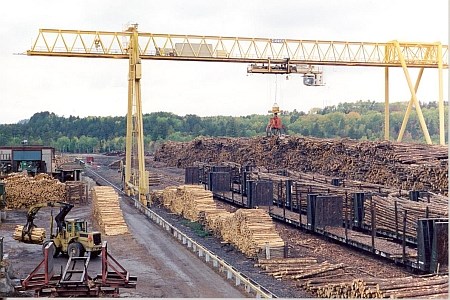When Northern Development and Mines Minister Michael Gravelle took over the business side of Ontario’s forests, tenure reform was a top priority.
Almost a year into the process, and through two rounds of public consultations, there are more questions than answers among industry stakeholders.
A new framework plan for forest tenure and pricing was introduced to stakeholders at a series of public meetings across the North in May and June.
The Ministry of Northern Development, Mines and Forestry said this proposed new approach can help "re-energize" Ontario’s slumping forestry sector.
The proposed framework involves introducing new Local Forest Management Corporations (LFMCs) to manage Crown forests and oversee the competitive sale of Crown timber.
Gravelle said in a statement that the proposed new system will be flexible, transparent and responsive to changing conditions.
"It would also be designed to increase business opportunities for new entrepreneurs and promote market competition for allocating and pricing Crown timber."
Daryl Skworchinski, economic development officer for the Town of Marathon, felt encouraged by what he’s heard and read from the province.
His community has a joint venture proposal trying to gain access to 700,000 cubic metres of wood in the Big Pic Forest management unit.
The town is partnering with the Town of Manitouwadge and the Pic River First Nation to find an new value-added operator for the closed-down Marathon Pulp site. The mill’s wood supply is now up for grabs since its bankrupt owner, Tembec, cannot hold a Sustainable Forest License (SFL) and their fibre allotment has gone back to the Crown.
The current SFL system has always generated an outcry from new forest players that big industry controlled most of the access to management units in Northern Ontario.
Skworchinski said this is a "prime opportunity" to put the new tenure model to the test. Since the policy is only at the framework stage, he believes there is plenty of wiggle room to shape the province’s plan to ensure there is more local control of management units.
"There was definitely no commitment made to anyone. The ministry committed only that there was going to be change."
Skworchinski said unanswered questions remain on how the proposed forest tenure system will merge with the government’s ongoing wood supply competition to find a use for underutilized Crown fibre. He knows of two companies that have placed bids to access fibre in the Big Pic.
"If they win, where does that leave the local forest concept? And vice-versa, if the tenure change comes out first, where does that leave the wood supply competition?"
Skworchinski said ministry officials promised to take their concerns back to Queen’s Park. It may be eight to 12 months before anything final is delivered.
Jack Harrison, general manager of the Dryden Forest Management Company, wonders if the proposed tenure system will put firms like his out of business.
The company has the harvesting and marketing rights to 120,000 hectares of wood in the Dryden Forest and runs 19 harvesting operations in many nearby management units. He worries that in a "worst-case scenario," the province will create new Crown corporations to do his work instead.
A ministry information meeting held in Dryden on May 20 did little to answer his questions.
Though optimistic about the future of value-added forestry in northwestern Ontario, the short-term outlook "has put quite a chill in the forest industry" because of this new system.
Harrison said the expectation was that businesses that submitted proposals for the wood supply competition would receive a commitment allowing them to secure investment capital for their operations. Now "the message has changed" and businesses will have to compete for wood supply through competitive sales by a future Crown corporation.
"From a business perspective, investing in the forest products industry does not make any sense at this point," said Harrison, "as there is just too much uncertainty about access to fibre."
He wants the wood supply competition completed first and the allocation of fibre to be awarded to the best business proposals.
Then he wants the province to complete an earlier process of converting "single-entity" SFLs to cooperative units to ensure new forestry players have equal access to wood.
Jeff Butler, a forestry consultant and president of White River Forest Products, a new northwestern Ontario start-up was reserving judgment until he sees the details on how the the new tenure system will be implemented.
His value-added mill and co-generation proposal is seeking access to 551,000 cubic metres of wood in the White River Forest once used by Domtar.
"There needed to be some changes to the tenure system but I’m not totally convinced at this stage until I know all the details that this is going to resolve all the issues."
His company has applied for fibre through the wood supply competition, but this new tenure reform model makes it difficult to raise private investment capital when the wood supply situation is in flux.




